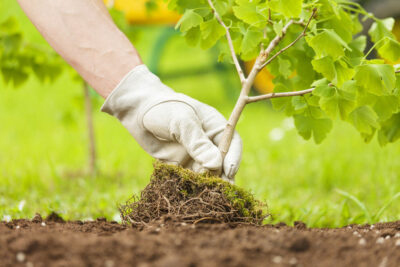
When planting trees, finding the right kind of tree and the right location for the tree is great for energy conservation. According to, “Planting Trees For Energy Conservation: The Right Tree in the Right Place” by Michael Kuhns, Extension Forestry Specialist with Utah State University, planting a tree can result in energy savings.
Planted in the right spot, a tree can provide wind protection, shade, and cool air, in addition to adding beauty, privacy, and wildlife habitat to the landscape surrounding it. The right tree in the right spot can result in lowering the heating needed to warm your home and the air to cool it, while lowering your bills. Invest in some trees and lower your bills, sounds like the perfect solution!
When choosing the right tree for your yard to conserving energy, there are a few choices. Evergreen trees and deciduous trees (trees that lose their leaves in the fall), “save energy in summer by directly cooling the air.” Deciduous trees save energy by shading houses, paved areas, and air conditioners, whereas evergreen trees and shrubs save energy by “slowing cold winds in the winter.” Evergreens provide some shade, which is most effective when the sun is not directly above.
As far as the area to plant the tree, you must decide whether you are more concerned with shade or wind protection.
Planting for Shade
For shade in the summer months, plant deciduous trees to shade east-facing walls and windows in the morning hours, and west-facing areas in the afternoon. Trees planted to the south of a home or business will only shade in the summer if they extend over the roof, but this can result in too much shade during the winter months. To avoid winter shade, plant trees at least 2 to 2.5 times their mature height away from your home or building. It is also ideal to shade air conditioners from the mid-morning through the evening. Branches should be cleared several feet around the air conditioner to help airflow. Shrubs planted too close to the air conditioner can reduce airflow and cooling efficiency.
Planting for Wind Protection
To help decrease your heating bills during the cold winter months, planting a “windbreaking” tree can prove to be beneficial for your yard and energy bill. The trees best suited to help conserve energy in the winter are trees who keep their leaves in the winter include junipers, firs, and evergreen shrubs.
Plant these trees and shrubs upwind of the area to protect, which will most likely mean planting them on the west, north or northwest side of a home or building, although local climates may dictate otherwise.
For additional information about the right kind of trees to plant and where to plant them, read the full article here.
Good luck planting and saving energy!

